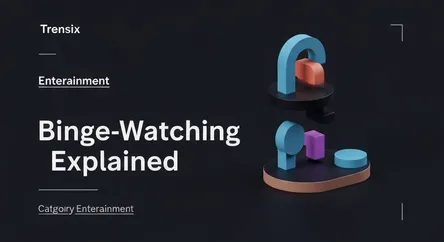Entertainment
Binge-Watching Explained

Discover the phenomenon of binge-watching: what it is, why it's trending with streaming, and its impact on viewing habits and daily life.
What is it?
Binge-watching, or marathon-viewing, is the practice of watching multiple episodes of a television series in a single sitting. This modern viewing habit breaks from the traditional model of watching one episode per week, allowing viewers to consume entire seasons over a weekend or even a day. It is primarily facilitated by on-demand streaming services that release full seasons of shows at once, putting the control of pacing directly into the hands of the audience.
Why is it trending?
This trend has been fueled by the rise of streaming giants like Netflix, Hulu, and Disney+. By making entire series instantly available, these platforms eliminated the wait between episodes. This model capitalizes on the narrative 'cliffhanger,' compelling viewers to immediately click 'Next Episode' to find out what happens. The convenience of on-demand access and the desire for instant gratification have made binge-watching a dominant form of media consumption globally.
How does it affect people?
Binge-watching offers a deeply immersive storytelling experience, allowing viewers to become fully absorbed in a show's world. However, it also has notable effects on lifestyle and health. Prolonged, sedentary viewing can disrupt sleep patterns—the 'one more episode' syndrome often leads to late nights—and may contribute to social isolation. It has fundamentally altered how television shows are produced, with writers now creating narrative arcs designed for continuous viewing rather than weekly installments.